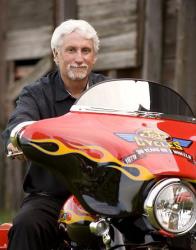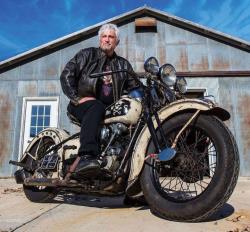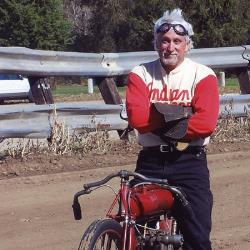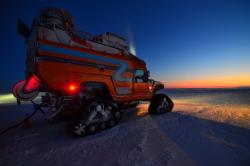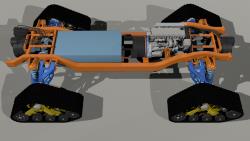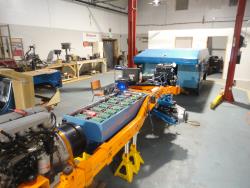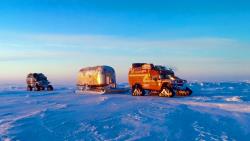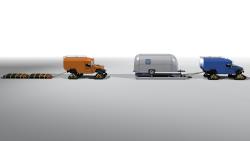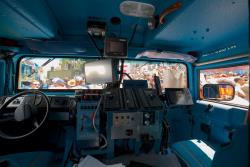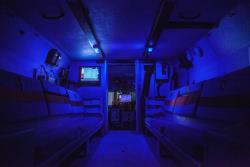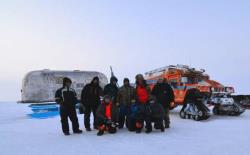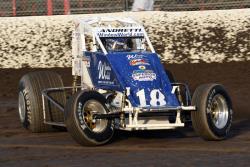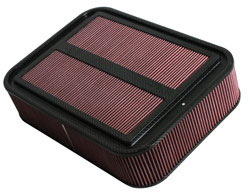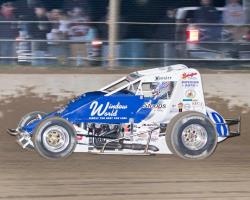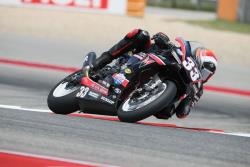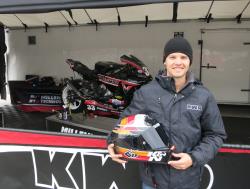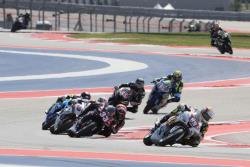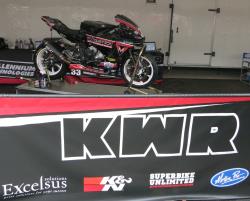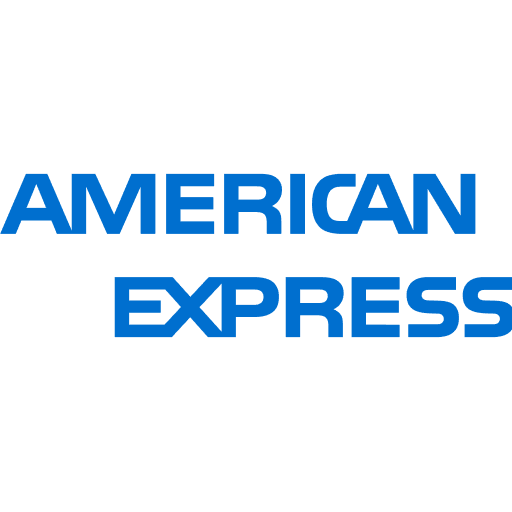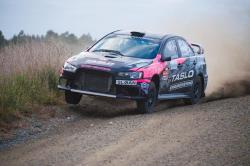
Sloan Cox and Sarah Coatsworth in their EVO X early in the rally before the drama began |
The distance between Riverside, CA and Dunedin, a coastal town on the South Island of New Zealand, is almost 7,200 miles. Why this geography trivia? Well, that’s just one of the locations around the world that Riverside-based K&N Filters are in use. In this situation, installed in a Mitsubishi EVO X rally car.
K&N has received fan letters from up and down the islands that comprise New Zealand for years. Kiwis (named after the native bird, not the fruit) who’ve installed the legendary filters on everything from Ducatis to Holden V8s, to an emergency response vehicle for a Fire District, have written to the company to share their experiences of improved response and increased performance.
The rally car mentioned is a Taslo Engineering Mitsubishi EVO X drive by Sloan Cox and co-driven by Sarah Coatsworth (a mother of two) in the 2017 New Zealand Rally Championship. Sarah ordered the filters the team would need for the season on the K&N website, and received free shipping to New Zealand as the order was over $50 US.
The first event day was Saturday, April 8, which started well for Sloan and Sarah as the pair settled in quickly; consistently putting down top three stage times. They were running so well that by Stage 3 they had caught the presumably faster car that started in front of them. Most of the Stage 3 was then spent in a plume of dust, unable to pass the slower car.
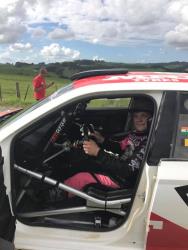
Sloan trying out FIA Asia-Pacific Rally Champ Gaurav Gill's seat before the rally start |
The pair headed into Stage 4 feeling confident, as though their bad luck was behind them. This was until they suffered a puncture from a sharp rock so common on the South Island gravel roads. The team had to continue driving 17 km (10.5 miles) through the stage before there was an opportunity to change the tire. Recognizing that any chance of ending the first day in the lead had evaporated, the priorities for the remainder of the stages were focused on producing consistent times and gaining valuable points for leg one of the rally. All in all, the pair finished the first day ninth overall.
Sunday brought new opportunities with top three stage times again being set and the pair winning Stage 11, at 47 km (29 miles), the longest stage of the rally. However, on Stage 12, things went sideways. An off-course excursion through a fence slowed the pair significantly. The team was able to cut through a field and slip out through a gate. Had they been trapped, they would have been time-barred but instead they completed the final stages to record a rally finish. In fact, the team finished just four minutes in arears after nearly three hours of stage time.
After the finish Cox commented, "the car was feeling amazing all weekend long and I felt really confident, especially in the longest stage of the event. We are really rapt with the overall rally finish in a first round that was not easy."
All in all the team were able to maintain fifth overall and earn some good points for the first round of the championship.
The team then turned their attention to Round Two of the New Zealand Rally Championship, International Rally of Whangarei. What differentiates the second rally from the first is that the second rally is a round of the FIA Asia-Pacific Rally Championship, really just a notch below the WRC. So competition wasn’t just coming from fellow Kiwis, but from professionals from Norway, Finland, and Sweden. Also competing was 2016 APRC Champion, India’s Gaurav Gill. While the international drivers didn’t earn NZ championship points, a strong showing by the local Kiwis is considered a sizeable accomplishment against so many full-time professional teams.
On Friday night, there were a Spectator Stage held on a one kilometer course on Pohe Island. Sloan was fastest on both passes of the short course, putting him essentially at the lead of the New Zealand Rally Championship field for Saturday. Having seesawed with the other top drivers, Sloan stayed right in the top three. In Stage 9 the team dropped to fourth. On Stage 10, disaster.
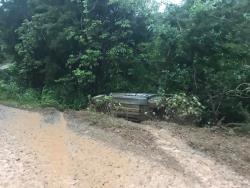
All that's visible is the left side of the EVO as its stuck in the ditch |
At 9.9 kilometers into the last Stage of a rainy day, the 14.82 kilometer Helena 2 Stage, Sloan and Sarah slid off the road. Heading out of a muddy turn the turbocharger boost dropped off so that Sloan wasn’t able to power out of the turn as usual. Instead they slid across the road and ended up sideways in a mud-filled ditch.
“After (rally organizer’s) tried pulling us out, it wasn't quite enough to get us out of that horrible spot. Luckily some locals bought down a tractor that was able to yank the car out. It's going to be a late night for the crew to assess and work on the car for potentially rejoining tomorrow,” Sloan posted on Facebook that evening.
Sarah added that it, "took approximately three hours to extricate the car from the ditch. The recovery 4WD initially couldn’t get it out as it was too far down and level with the road, so we had to find a tractor. Luckily there were some friendly locals that were able to find one for us and the car came out in ten minutes."
Unfortunately, it was the end of their Leg 1 of the rally, and the loss of any bonus points they could have earned had they finished well in both legs.
According to Sarah, “we were able to start on Sunday, the car was not too bad the initial cause being a turbo was fixed and car was just like new, bar a temporary back window, etc.” Unfortunately the crew had to start further back in the field now due to the time it took to extricate the car from the jaws of defeat.
Sloan and Sarah put down a time in the first Stage of Sunday's Leg 2 that placed them fourth, yet 13th overall due to low starting position. They were sixth on the next stage, but that was enough to move them into ninth. On the third stage of the day they took third, but it wasn’t enough to move them up on an overall basis. Waipu Caves 2, the 14th stage of the rally went to Sloan and Sarah, then second on Stages 15 and 16.
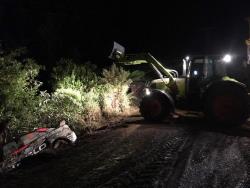
A local farmer was enlisted to pull the car from the ditch and had it out in 10 minutes flat |
But the drama doesn’t end there. According to Sarah, "we did four stages without any problems with a third in SS11, sixth in SS12, fourth in SS13, and won SS14. On coming out of SS15 the car was smoking from an oil leak, and on pulling into our refuel zone we found a small fire under the extractors. Now using lots of oil from a faulty turbo waste drain pipe we kept filling it from oil we had in the car. SS16 the last one of the day we obtained a second, cementing fourth overall for the day."
In 1949, the first rally in the United States was organized and the name chosen has become the credo for rally competitors: Press On Regardless. That most exemplifies the competitive spirits of Sloan and Sarah. Check back later for updates on Sloan and Sarah as the progress through the New Zealand Rally Championship.
|

